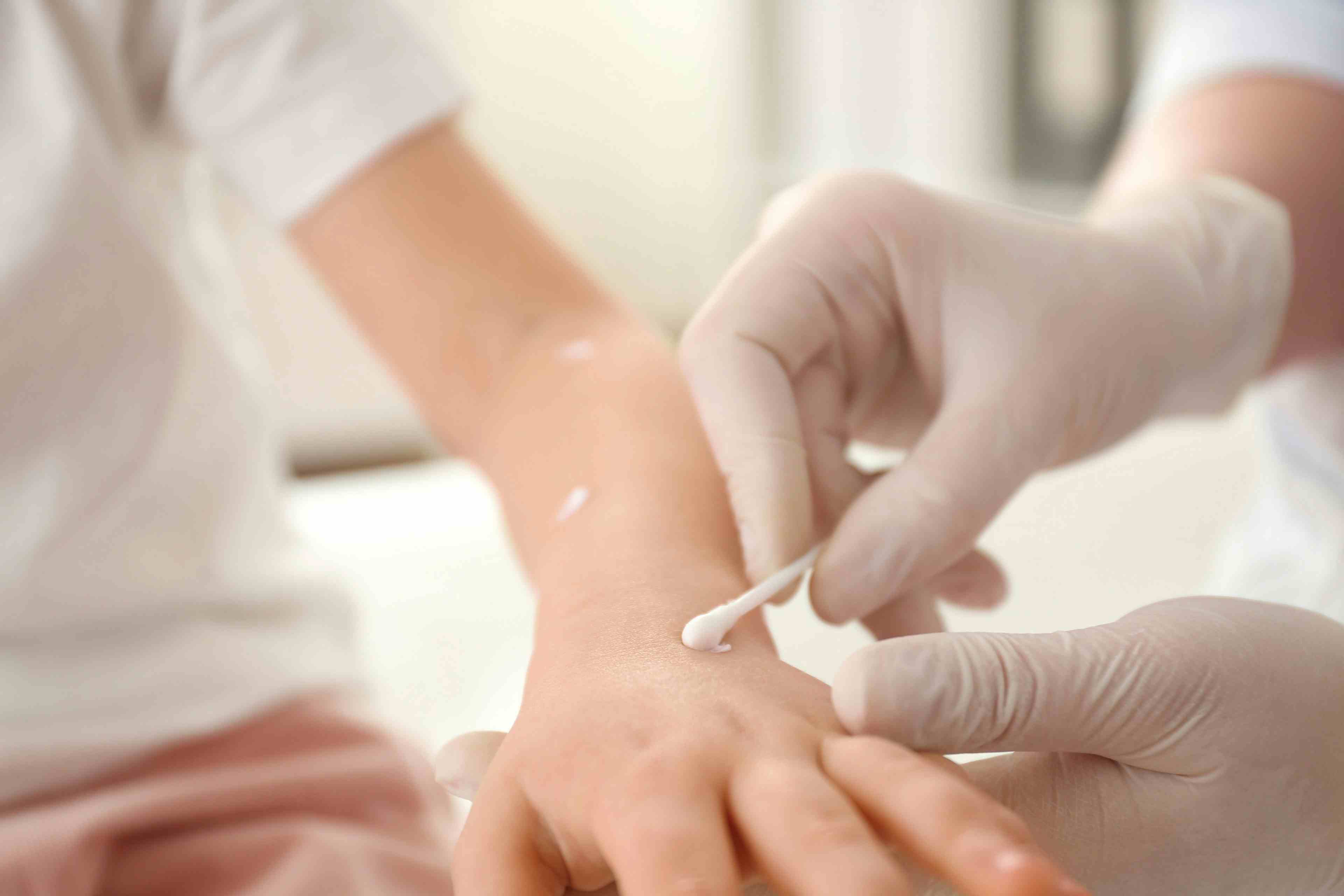- Acne
- Actinic Keratosis
- Aesthetics
- Alopecia
- Atopic Dermatitis
- Buy-and-Bill
- COVID-19
- Case-Based Roundtable
- Chronic Hand Eczema
- Drug Watch
- Eczema
- General Dermatology
- Hidradenitis Suppurativa
- Melasma
- NP and PA
- Pediatric Dermatology
- Pigmentary Disorders
- Practice Management
- Precision Medicine and Biologics
- Prurigo Nodularis
- Psoriasis
- Psoriatic Arthritis
- Rare Disease
- Rosacea
- Skin Cancer
- Vitiligo
- Wound Care
News
Article
Exploring Roflumilast Cream 0.3% for Refractory Palmoplantar Pustulosis
Author(s):
Key Takeaways
- Palmoplantar pustulosis is distinct from psoriasis vulgaris and often resistant to conventional treatments, impacting patients' quality of life.
- Roflumilast cream 0.3% shows promise in treating PPP by modulating the inflammatory cascade and inhibiting multiple pro-inflammatory cytokines.
An 82-year-old woman with PPP and treated with roflumilast cream 0.3% achieved complete clearance after 5 weeks of treatment.
Recognized by recurrent eruptions of sterile pustules on the palms and soles, palmoplantar pustulosis (PPP) is a chronic, immune-mediated condition distinct from psoriasis vulgaris. A recent report published in the Journal of Dermatology for Physician Assistants reviewed the use of roflumilast cream 0.3% for the treatment of PPP.1
According to author David Altman, MD, PPP is often resistant to conventional treatment, significantly impacting patients' quality of life. Although psoriasis and PPP may share similarities in their inflammatory pathways, PPP does not always respond well to biologic therapies that target psoriasis-specific cytokines, such as IL-17 and IL-23.
“It is hypothesized that palmoplantar pustulosis may have a more complicated pathophysiology, and the aforementioned biologics may simply be too targeted to fully address this particular entity,” wrote Altman.
Topical steroids, while effective in reducing inflammation in some cases, are limited by adverse events and tachyphylaxis when used chronically. Their broad anti-inflammatory effects are often not sustainable for conditions like PPP, which are typically recalcitrant to treatment. According to Altman, the concern of topical steroids for PPP has driven interest in non-steroidal treatments, including phosphodiesterase-4 (PDE-4) inhibitors such as crisaborole and roflumilast, which offer broader modulation of inflammatory pathways.
Case Report
Altman reviewed a recent case report highlighting the potential of roflumilast 0.3% cream in treating PPP. The 82-year-old female patient presented with persistent clustered pustules on her palms and soles, causing significant itch and pain that interfered with her ability to walk. Initially treated with high-potency topical corticosteroids—halobetasol 0.05% and later betamethasone dipropionate—the patient achieved only moderate improvement and continued to experience itching and pain. The patient declined systemic treatments, such as apremilast, and logistical challenges prevented her from undergoing laser therapy.
After 12 weeks of topical corticosteroid therapy with insufficient relief, the patient was switched to roflumilast 0.3% cream once daily. Within 5 weeks, she achieved complete remission. The patient’s pustules resolved, her itching and pain subsided, and she had minimal residual scaling. According to Altman, her significant improvement suggests that roflumilast may offer a novel therapeutic option for patients with PPP, particularly those who fail to respond to or cannot tolerate conventional treatments.
Roflumilast in PPP
Roflumilast, a potent PDE-4 inhibitor, has shown promise across a range of dermatologic conditions by modulating the inflammatory cascade. It inhibits the production of key inflammatory mediators, such as TNF-α, IL-23, IL-17, and IL-22, while also promoting anti-inflammatory cytokines. According to Altman, roflumilast’s broader anti-inflammatory effect may explain its efficacy in conditions such as PPP, where targeted cytokine inhibition has failed. Unlike biologics that may only focus on 1 or 2 cytokines, roflumilast appears to address the more complex, multifactorial inflammation seen in PPP.
“Perhaps because of its ability to address multiple different proinflammatory cytokines in a situation that may be somewhat different from the cases of plaque psoriasis where targeted biologics have excelled, this case serves as evidence that roflumilast cream 0.3% may be a safe and convenient treatment choice that can positively impact a patient’s
Clinical Practice Use
In his review, Altman noted that the successful treatment of PPP with roflumilast 0.3% cream emphasizes the unmet therapeutic need for patients with PPP. Although topical corticosteroids remain a mainstay of treatment, their limitations in efficacy and long-term use suggest the need for alternative therapies, especially in refractory cases. Roflumilast’s broad inhibition of multiple pro-inflammatory cytokines demonstrates its potential as a promising treatment for PPP, concluded Altman.
Reference
1. Altman D. Palmoplantar pustulosis successfully treated with topical roflumilast 0.3%. J Dermatol for Physic Assist. 18(3):p 34-35, Summer 2024. | doi: 10.1097/jdpa.0000000000000027
Newsletter
Like what you’re reading? Subscribe to Dermatology Times for weekly updates on therapies, innovations, and real-world practice tips.















